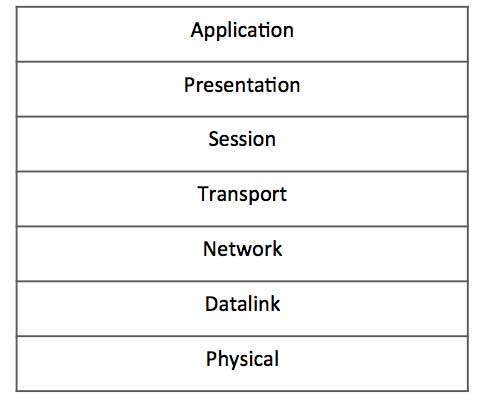
IPv4 - OSI Model
The International Standard Organization has a well-defined model for Communication Systems known as Open System Interconnection, or the OSI Model. This layered model is a conceptualized view of how one system should communicate with the other, using various protocols defined in each layer. Further, each layer is designated to a well-defined part of communication system. For example, the Physical layer defines all the components of physical nature, i.e. wires, frequencies, pulse codes, voltage transmission etc. of a communication system.
The OSI Model has the following seven layers −

Application Layer (Layer-7) − This is where the user application sits that needs to transfer data between or among hosts. For example − HTTP, file transfer application (FTP) and electronic mail etc.
Presentation Layer (Layer-6) − This layer helps to understand data representation in one form on a host to other host in their native representation. Data from the sender is converted to on-the-wire data (general standard format) and at the receivers end it is converted to the native representation of the receiver.
Session Layer (Layer-5) − This layer provides session management capabilities between hosts. For example, if some host needs a password verification for access and if credentials are provided then for that session password verification does not happen again. This layer can assist in synchronization, dialog control and critical operation management (e.g., an online bank transaction).
Transport Layer (Layer-4) − This layer provides end to end data delivery among hosts. This layer takes data from the above layer and breaks it into smaller units called Segments and then gives it to the Network layer for transmission.
Network Layer (Layer-3) − This layer helps to uniquely identify hosts beyond the subnets and defines the path which the packets will follow or be routed to reach the destination.
Data Link Layer (Layer-2) − This layer takes the raw transmission data (signal, pulses etc.) from the Physical Layer and makes Data Frames, and sends that to the upper layer and vice versa. This layer also checks any transmission errors and sorts it out accordingly.
Physical Layer (Layer-1) − This layer deals with hardware technology and actual communication mechanism such as signaling, voltage, cable type and length, etc.
Network Layer
The network layer is responsible for carrying data from one host to another. It provides means to allocate logical addresses to hosts, and identify them uniquely using the same. Network layer takes data units from Transport Layer and cuts them in to smaller unit called Data Packet.
Network layer defines the data path, the packets should follow to reach the destination. Routers work on this layer and provides mechanism to route data to its destination.